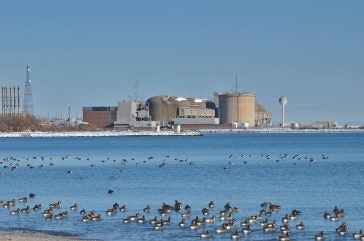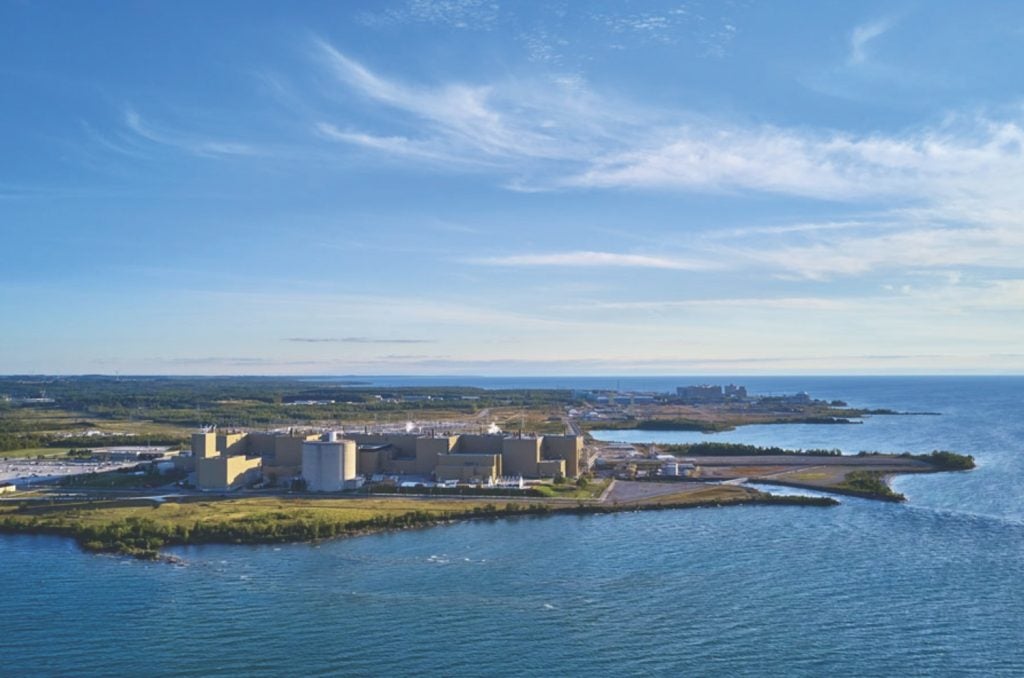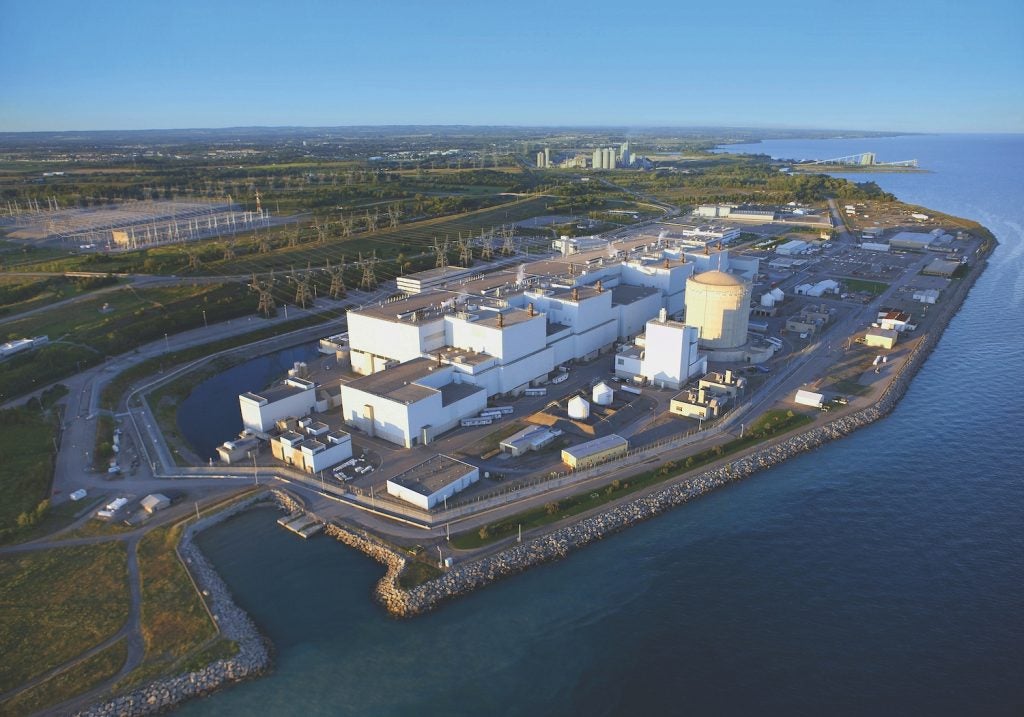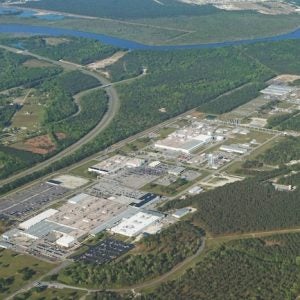
Favourable government nuclear policy and investment, heightened private sector interest, and industry performance are having a positive effect on Canada’s ability to support its climate and economic goals, a new report says. However, the May 2024 release by Canada’s Green Ribbon Panel (GRP) also suggests safe hands need to remain on the tiller to deliver on this promise.
In February 2020, the Green Ribbon Panel of leaders from industry, business, labour, environment and health released its first report, informed by objectives that integrated climate and economic goals. It identified that climate change must be the foundation for action and that, at the same time, low-carbon emission energy presents a competitive national advantage. The report also noted enabling policy frameworks, with participation from all levels of government and inclusion of public-private partnerships, would be necessary to fully achieve the country’s energy transition goals.
The report identified Ontario’s nuclear industry, alongside other pillars like electrification, clean fuels and storage, as central to Canada’s ability to “tackle climate change while ensuring economic growth.” It emphasised the value of optimisation and refurbishment of existing nuclear assets, as core to a national emission-reduction strategy.
Four years later, following on from a 2022 report as well as significant policy progress, in May 2024, the Panel’s newest release, ‘Preserving progress and maintaining momentum’ takes stock of what’s been accomplished and adds a view on crucial next steps.
Ontario: Ground zero for Canadian nuclear
Unlike many countries with national electricity programmes, in Canada, responsibility falls to each of its 13 provinces and territories. Consequently, the country has a patchwork approach defined by each jurisdiction’s geography, natural resources, inter-ties, and public policy focus. This does not diminish the importance of the federal government, which holds critical broader policy, investment and regulatory levers and which can strongly influence technology feasibility.

Ground zero for Canada’s nuclear energy programme is Ontario where the province’s three nuclear stations with 18 made-in-Canada CANDU reactors hold over 13,000 MW generating capacity. Aside from Ontario, only one other province, New Brunswick, currently operates a nuclear plant with one 700 MW CANDU reactor – though others are now exploring nuclear programmes.
Ontario is home to 15 million people representing about 40% of the country’s population and about the same proportion of GDP. It’s by far Canada’s single largest economic engine. For more than a half century, nuclear has been a cornerstone contributor to reliability, powering Ontario’s engine, and by extension, Canada’s.
Since the province closed its last coal plant in 2014, nuclear has played an oversized generation role, often producing as much as 60% of the province’s electricity. Ontario gets another roughly 25% of its generation from hydropower. Combined, nuclear and hydro comprise a baseload that has made the province one of the lowest-carbon electricity systems in the world, a strategic advantage that’s become a key economic policy plank of the provincial government.
Kicking off the GRP report launch, its chair, James Scongack, was keynote at a luncheon of the Empire Club, one of Canada’s pre-eminent thought-leadership forums. There, he talked about the scope of the energy transition and given its enormity, the importance of focusing resources where they will have greatest effect. Investment in continued performance of existing low-carbon infrastructure that supports the country’s economy today, should be that priority, he told the business audience.
“There is nothing from a time perspective, a cost perspective or from a reliability perspective, that will ever outgrow or be better than moving forward with those existing assets,” he said. “It’s very difficult to build the future without that base secured. We’ve demonstrated the ability to do that… While it’s great to be looking at new opportunities, in terms of prioritising government policy, funding mechanisms, skilled trades, Job 1 is the existing assets.”
Demand for rapid clean capacity expansion
Scongack, an executive vice president at Bruce Power, recently led the successful return to service of a major component replacement project on the first of the Bruce stations’ six units slated for refurbishment between 2020 and 2033 (two of eight Bruce units returned to service in 2012 following refurbishment). The company has also been tapped by the Ontario government to look at adding another 4,800 MW of new nuclear power to Ontario’s grid. Ontario’s other nuclear operator, provincially-owned Ontario Power Generation (OPG) is currently constructing the first of four, first-of-a-kind GE Hitachi 300 MW small modular reactors, while completing its own four-unit refurbishment at the same site.

That’s just the start. Ontario has identified the need to more than double the megawatts of electricity on its provincial grid to 88,000 MW to meet exponential demand for low-carbon electricity between now and 2050. Accounting for replacement generation, the provincial system operator estimates a need for about 69,000 MW in that time, with about a quarter –an additional 17,200 MW – slated to come from nuclear.
Provincial support on nuclear has been consistent under the current government. A few years ago, the realities of climate and economics created an opening for new views on nuclear at the federal level, as well. In a 2023 update to its green bond framework, Canada added nuclear, providing a means to raise capital for both new and existing asset projects, a first for any country.
The federal government has come out strong on behalf of nuclear, providing research funding, tax credits and supportive policy. The 2024 budget called nuclear “one of the key tools in helping the world reach net-zero emissions in 2050,” in just one of an unprecedented 46 mentions nuclear received.
The federal government support for the nuclear power investment tax credits is critical, says Scongack, who says ratepayers benefit directly. “An investment tax credit reduces the capital cost of the project, which flows to the ratepayer and the ratepayer permanently benefits from that. It’s about getting things built but… we know affordability is a significant issue for families and businesses. Investment tax credits are about ensuring people have more affordable electricity, so it can be clean and so we can get things built, but the affordability is critical.”
The federal government has also introduced measures such as financing support and loan guarantees to help Indigenous communities and businesses invest and gain an equity stake in the industry’s growth market, critical to social licence.

Sure and steady
Scongack says it’s also really helpful that government and industry are now largely on the same page when it comes to nuclear power generation. He is quick to recognise the Panel is just one voice in a choir that has been working to make that happen. Industry is a bit like the dog that’s caught the car, he says. Now everyone needs to shift from visioning to executing. In part, this means ensuring “no regret actions” for investors, through certainty on project costs and recovery mechanisms, something all parties have a role in.
For industry, it means consistent delivery of projects, on-time and on-budget, something Scongack points out Ontario’s nuclear operators have proven they are capable of “time and time again.”
For government, delivering regulatory certainty and efficiency will be critical, Scongack says. The federal government recently set a target for three-year maximum nuclear project reviews to better streamline and reduce duplication with additional measures for various aspects of the process.
Scongack says the next step is instilling the culture to deliver on that, within regulatory agencies and in government to expedite these projects. “You can have the most efficient process in the world but the way that process is executed and implemented is a cultural focus.”
These pieces together create the climate for investment that will be necessary to achieve required scale, he says, adding, these are not big innovations, rather incremental changes that cumulatively make a substantial difference.
“Nobody likes to talk about incremental actions, but it is the composition and specificity of those incremental actions that are going to create success.”
Sure and steady.
Author: Jacquie Hoornweg, President, Joule Communications






